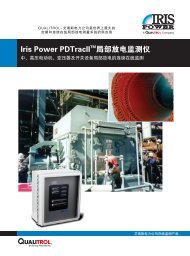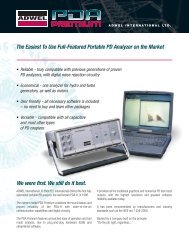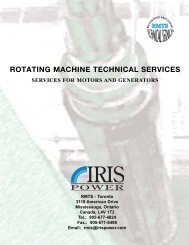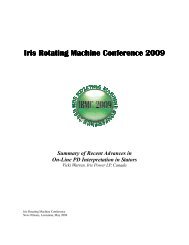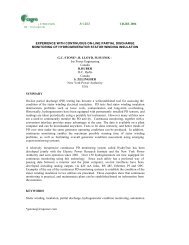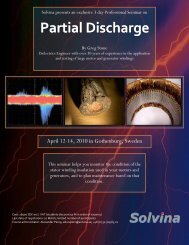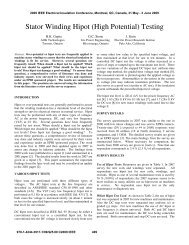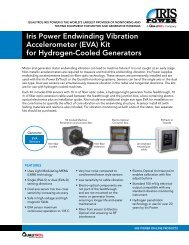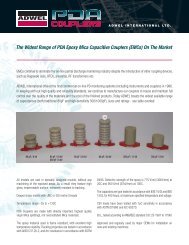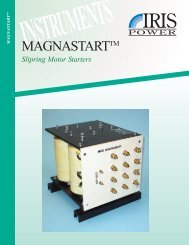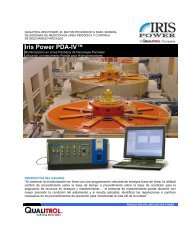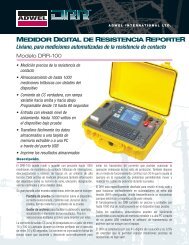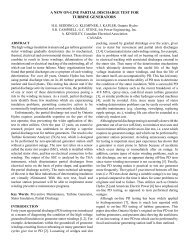Download Magnastart handbook - PDF - Iris Power Engineering
Download Magnastart handbook - PDF - Iris Power Engineering
Download Magnastart handbook - PDF - Iris Power Engineering
Create successful ePaper yourself
Turn your PDF publications into a flip-book with our unique Google optimized e-Paper software.
6. PERFORMANCEThe <strong>Magnastart</strong>’s linear impedance characteristic means that the stator current drawn onstart remains almost constant during three-quarters of the starting cycle. This hasconsiderable advantages when supply restrictions are in force, as it enables the fastestpossible start to be obtained within a given current limit.Typical torque and current to speed characteristics are given in the charts below to illustratethe benefits of using a <strong>Magnastart</strong> Inducer as a rotor starter, compared to direct on linestarting. (The impedance values 1-6 are nominal, and only reflect the typical range ofimpedances achievable from a <strong>Magnastart</strong>, not any particular tapping). Fig. 4 shows thevariation in starting torque as a proportion of Full Load Torque (FLT) with impedance.47Direct on Line6Direct on Line3Lowest Impedance 1Impedance 25Lowest Impedance 1Impedance 2Torque / FLT2Impedance 3Impedance 4Current / FLC43Impedance 3Impedance 41Impedance 5Highest Impedance 621Impedance 5Highest Impedance 600 10 20 30 40 50 60 70 80 90 10000 10 20 30 40 50 60 70 80 90 100Speed %Fig. 4 Fig. 5As can be seen, direct on line starting will give the least starting torque, and there is anoptimum impedance for maximising starting and run-up torque, with higher impedancesgenerally depressing both values (though reducing starting current). On most motors thismaximum starting torque occurs between 3 and 4 times the full load rotor current.<strong>Magnastart</strong> is most efficient, starting fan loads and large flywheels, at 2 times full loadrotor current.Fig. 5 shows the effect of the various impedances on starting line current, as a proportion ofnormal full load current (FLC), and illustrates that the starting current can be maintained atlow levels if high starting torque is not a key requirement. (As is normal, current andtorque both reduce to zero at 100% synchronous speed, ie no slip).Speed %Section 9 gives details of tappings and relative impedances achieved.Page 8 V1.3



